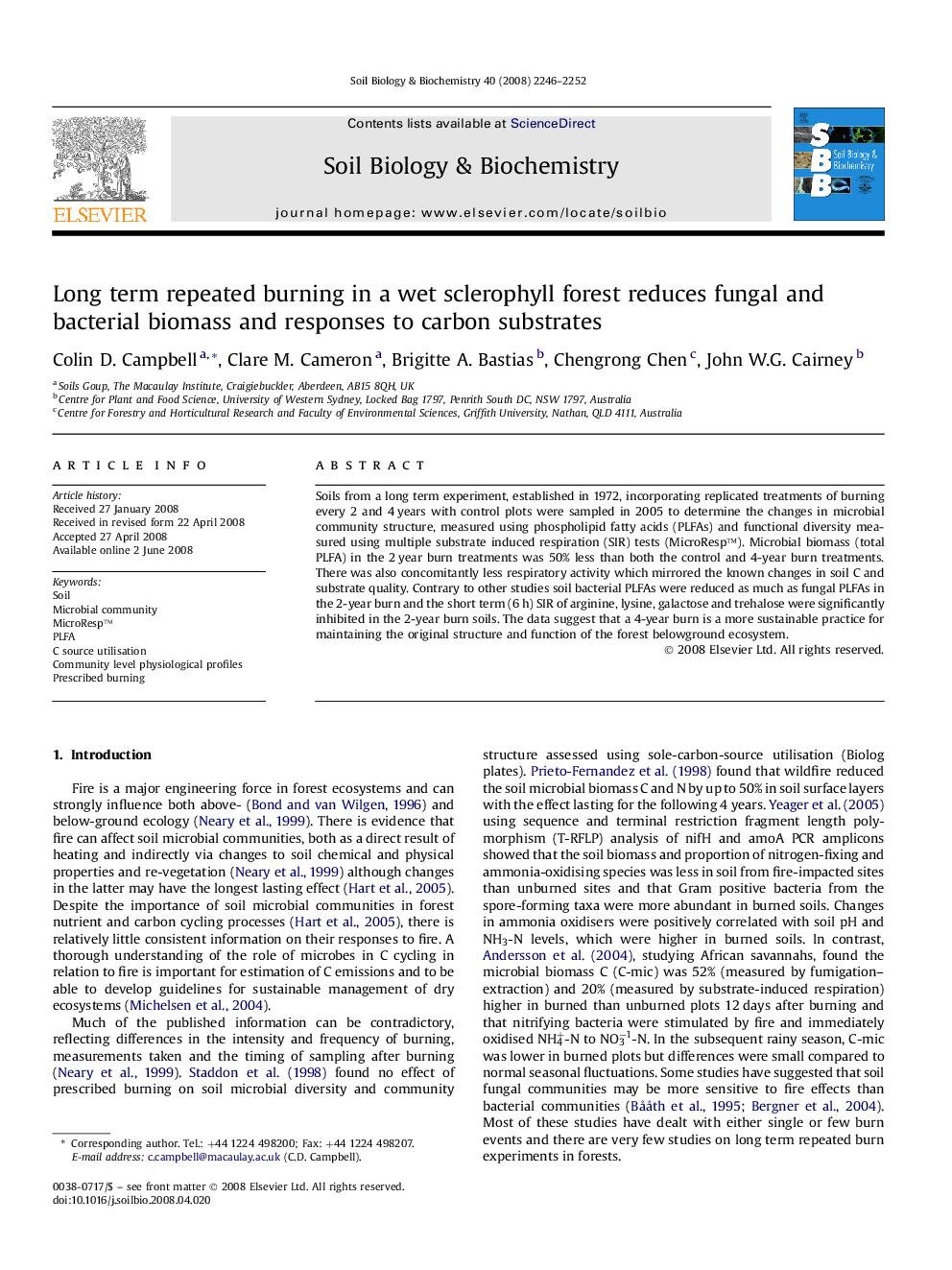| Article ID | Journal | Published Year | Pages | File Type |
|---|---|---|---|---|
| 2026884 | Soil Biology and Biochemistry | 2008 | 7 Pages |
Soils from a long term experiment, established in 1972, incorporating replicated treatments of burning every 2 and 4 years with control plots were sampled in 2005 to determine the changes in microbial community structure, measured using phospholipid fatty acids (PLFAs) and functional diversity measured using multiple substrate induced respiration (SIR) tests (MicroResp™). Microbial biomass (total PLFA) in the 2 year burn treatments was 50% less than both the control and 4-year burn treatments. There was also concomitantly less respiratory activity which mirrored the known changes in soil C and substrate quality. Contrary to other studies soil bacterial PLFAs were reduced as much as fungal PLFAs in the 2-year burn and the short term (6 h) SIR of arginine, lysine, galactose and trehalose were significantly inhibited in the 2-year burn soils. The data suggest that a 4-year burn is a more sustainable practice for maintaining the original structure and function of the forest belowground ecosystem.
